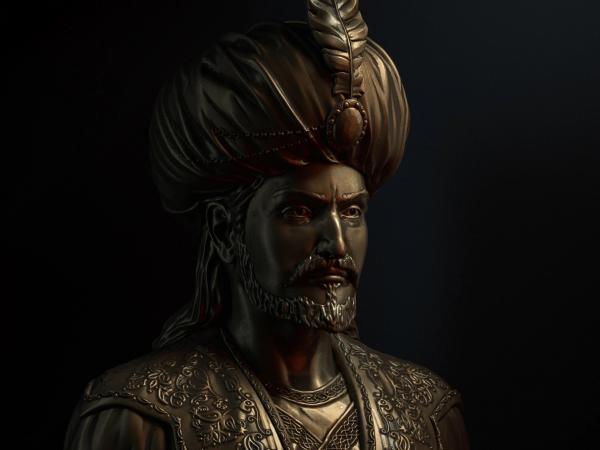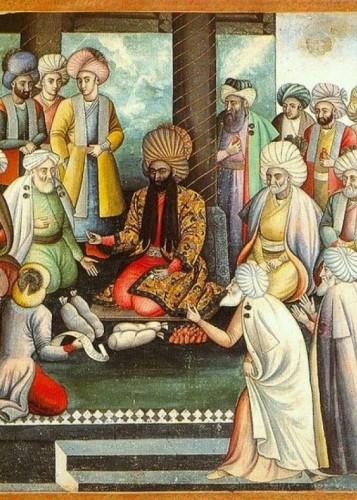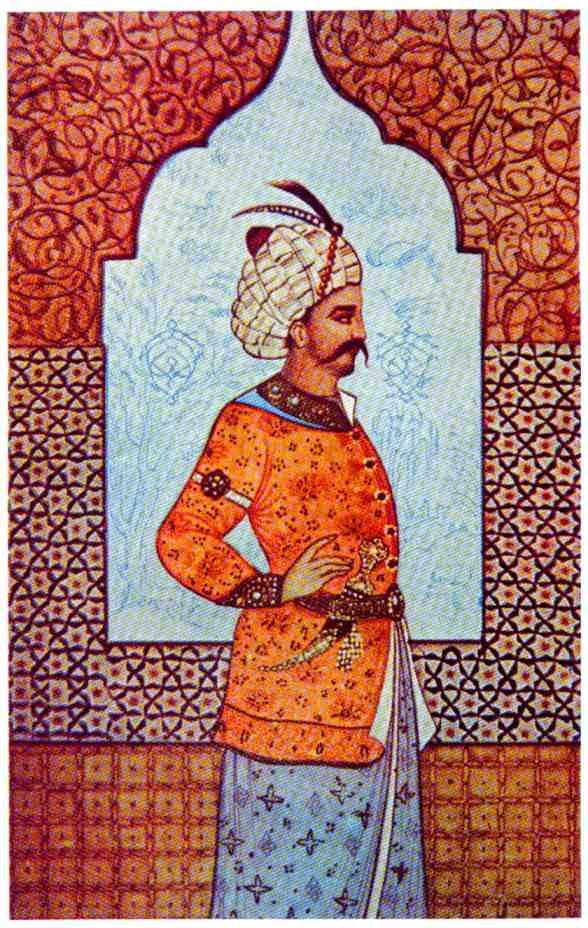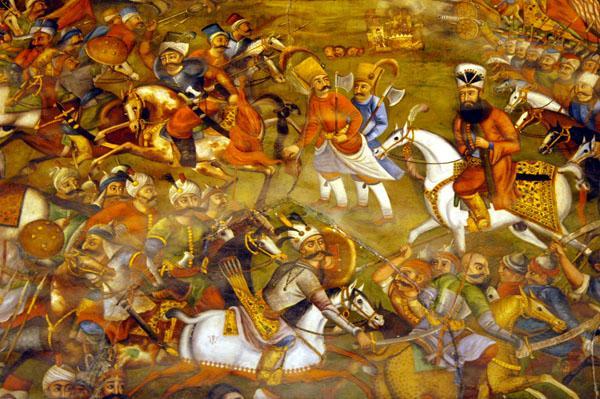Shah Ismail I; The founder of the powerful and magnificent Safavid dynasty

 Statue of Shah Ismail I
Statue of Shah Ismail IShah Ismail He was the founder of the Safavid dynasty, who was able to dominate Iran after nine centuries of the fall of the Sasanian dynasty. Shah Ismail I forced the Shia religion on the people, which had great consequences on the future of Iran.
An abstract of Shah Ismail I's biography:
Full name: Ismail bin Sultan Haider bin Sheikh Junaid
Date of birth: Tuesday 25 Rajab 893 lunar year and 4 August 866 solar year
Place of birth: Ardabil, Sultanate of Agh Quyunlu
Title: Abul Muzafar Bahadur Khan Hosseini and Shah Ismail Khataei
Reign period: 1 Jumadi al-Thani 907 – 19 Rajab 930
Substitute: Tahmasab I
Biography of Shah Ismail I:
Shah Ismail I He was the founder of the powerful, great and magnificent Safavid dynasty, he was an Iran-friendly person and of course a Shiite, who did not sit still for a moment in his life to take back the occupied territory of Iran and make Iran proud again. He first captured Baku. Then, in 914 Qamari, he went to Ajam Iraq, which was occupied by the Arabs, and again added this region to the territory of Iran.
The defeat of the invading Uzbeks was his other action, and after that he made Afghanistan, Turkmenistan, and Uzbekistan, which were known as Merv, Herat, and Balkh, a part of Iran. Shah Ismail asked for help from different Iranian tribes such as; Gilki, Kurd, Ler, Bakhtiari, Azari, Baluch, Khozi, etc., and after the passage of about a thousand years, he turned Iran into a unified land. The saga of Chaldran took place during the reign of this king, which is very important. By uniting all the kingdoms, Shah Ismail suppressed the aggressors and left a united, powerful and glorious Iran in history.
The Shiite religion was made official by Shah Ismail, by reviving the Iranian identity, he brought Iran's borders to Sassanid borders and by turning Iran into an independent political unit after about 800 years; He recorded his name in history. Shah Ismail's poems in Turkish, Azerbaijani and Persian have been left with the surname “Khatai”.
Ancestry of Shah Ismail I:
Ismail bin Sultan Haider bin Sheikh Junaid nicknamed Abul Muzafar Bahadur Khan Hosseini and known as Shah Ismail I; He was the founder of the Safavid Dynasty in Iran. He was the son of Sheikh Haider who was born in Ardabil on 265 Rajab 892 and 4 August 866. Despite five intermediaries, his relationship reaches Sheikh Safiuddin Ardabili. daughter of Ozon Hasan Agh Qoyunlu; Halima Begum Agha was the mother of Shah Ismail, whose real name is Marta. She remained a Christian until the end of her life and was finally buried in the mausoleum of Sheikh Safiuddin Ardabili.
Life:
After Sheikh Haider was killed; In Rajab 893, Yaqub Beyk, the son of Uzon Hasan imprisoned his sister along with her nephews Ali, Ibrahim and Ismail (who was no more than a year old at the time) in Fars Pool.
Yaqub Bey's son Rostam Bey came to power after him. He, because of his former ally and current enemy; Farrukh Yasar needed the help of Sheikh Haider's children and their disciples to fight back, so he released his aunt Halimah and her children from prison after about four and a half years in 898 lunar year and moved them to Tabriz.
Rustam Beyk was able to achieve his goals with the help of “Sultan Ali” and his followers. Therefore, he allowed Sheikh Haider's family to go to Ardabil, but due to the increase of their followers in Ardabil, he felt threatened and sent them back to Tabriz. He decided to destroy Ali and the leaders of Sufiya, so Sultan Ali and his disciples fled at night. Rostam Beyk sent an army of 5,000 men under the command of Aibe Sultan to pursue them, and they met the Sufis near Ardabil in the village of “Shamas”. Finally, Sultan Ali was killed, but before this, he chose Ismail Mirza as his successor.
 A painting of Shah Ismail I among the courtiers
A painting of Shah Ismail I among the courtiersObtaining Shah Ismail's religious and military training in Lahijan:
After the murder of Sultan Ali; His brothers Ibrahim and Ismail lived secretly in Ardabil for a while, then at the invitation of the Shia governor of Gilan, Karkia Mirza Ali, the Qazalbash went to Lahijan. With the care that Shamsuddin Lahiji had for Ismail in the five years he stayed there; He was able to use the riches of that land and learn Persian, Arabic, Quran and the principles of Shia Imamia. In addition, during this period, he learned war techniques under the supervision of seven Sufi Lahijan nobles.
The defeat of Farrokh Yasar and entering Tabriz:
Ismail Mirza went to Ardabil with seven nobles of Sofia Larijan and as he got closer to this city; He was added to his companions, finally in 905 AH, he went to war with Farrokh Yasar, the murderer of his father, along with seven thousand soldiers and defeated him. In the continuation of this story, the Baku Castle was conquered, the buildings were razed to the ground, the grave of Khalilullah, the murderer of Sheikh Junaid, was desecrated so that his bones were pulled out of the ground and burned, then he went to war with the ruler of Azerbaijan; Alvand went to Beyk and entered Tabriz by defeating him.
 Paintings left by Shah Ismail I
Paintings left by Shah Ismail IThe most important actions of Shah Ismail:
Officialization of Shiism in Iran:
In the summer of 907 AH, when Shah Ismail was 15 years old, he performed the coronation in Tabriz and after the coronation, he ordered that all sermons should be recited with the names of the twelve Imams, and that the phrase “Ashhad anna aliyyah Wali Allah” should be added to the call to prayer. . Shah Ismail forcibly formalized the Shia religion, considering that until then the majority of the people of Iran were of the Shafi'i religion, this issue created wide consequences for the future of Iran.
with the establishment of the Safavid government by Shah Ismail; Iran from a torn land; It turned into a united, unified land with political unity, on the one hand, with the officialization of Twelver Shiism; National identity was strengthened and eventually a more centralized and stronger government emerged.
With the officialization of the Shia religion in Iran; A clear distinction was made between the Safavid state and the Ottoman Empire, which was the main power of the Islamic world in the 10th century, and thus the Safavid state assumed a territorial and political identity.
The continuation of Shah Ismail I's conquest of the country:
By defeating the opponents by Shah Ismail; The territory of Iran's government expanded, he was able to defeat “Sultan Murad Aq Qoyunlu” who was near Hamedan, and in this way he dominated all of Iraq. Qazalbash's forces captured Semnan and Fars in the 90th lunar year and Yazd a year later. In 914, Shah Ismail also gained power over Arab Iraq.
After the capture of Diyarbakir and the upper part of the Euphrates and the conquest of Alaa al-Dawlah Dhul-Qadr by Shah Ismail; He left for Iraq to capture the last base of the emirs of Baindari, Agh Quyunlu, and the holy cities of Shiites. In 914 after Baghdad was conquered; He went to Najaf, Karbala and Samarra and renovated and repaired the imam court. In 916 AD, Sultan Ismail defeated “Shibek Khan Uzbek”, who was his Sunni rival, then ordered his head to be removed from his body and sent to the Ottoman Sultan, Bayezid.
 Biography of Shah Ismail I
Biography of Shah Ismail ITension with the Ottoman government:
With the expansion of the Shiite religion in the eastern lands of the Islamic territory and the advance of Shah Ismail in the Trans-Nahr; Acceptance became difficult for Bayezid II, who considered himself one of the leaders of all Muslims in the world, so he came through friendship with Shah Ismail, but when Sir Shibak Khan was sent to him; His anger increased, in this regard, he threatened Shah Ismail with war for interfering in the work of the Ottoman Shiites and for the idea of ”conquering the Roman kingdoms.”
Shah Ismail under the pretext of supporting the Sufis and Shiites of the Ottoman Empire; He took advantage of the social and political crises in the Ottoman Empire, supported the revolt of Shah Qoli Baba Teklo, and helped Noor Ali Khalifa to destroy and capture the Ottoman cities.
Battle of Chaldaran:
On the second day of Rajab 920, a war broke out between Sultan Salim and Shah Ismail in the Chaldaran plain, which did not last more than a day and finally ended with the Ottoman victory. do After the defeat in Chaldaran, Shah Ismail fled to Dergzin and Sultan Salim entered Tabriz with victory, but he could not stay there and after 8 days he left for Istanbul and all the artists who were brought to the capital by Shah Ismail along with a group of The artisans and nobles of Tabriz were taken to the Ottoman Empire.
After Salim left Iran; Shah Ismail returned to the capital and was always looking for a way to compensate for the Chaldaran war; Among the measures he thought of in this regard was to accept the presence of the ambassadors of the kings of Hungary and Germany, who invited the European countries to unite against the Ottomans.
It should be noted that after Shah Ismail was defeated in Chaldaran; began to mourn; He changed the flags to black, the word “Al-Qasas” was written on them, he wore a black cloak and he did not pay attention to government affairs like before.
 Shah Ismail I in the Battle of Chaldaran
Shah Ismail I in the Battle of ChaldaranDeath of Shah Ismail I:
After 23 years of reign, the time of Shah Ismail's death also came. He passed away at the age of 38 on Monday, 19 Rajab 930, and his body was buried in the mausoleum of Sheikh Safiuddin Ardabili. After his death, he left four sons with the names; “Tahmasab Mirza”, “Al-Qasab Mirza”, “Sam Mirza” and “Bahram Mirza” who Tahmasab first He continued his father's rule.
compilation: Cover biographical section






